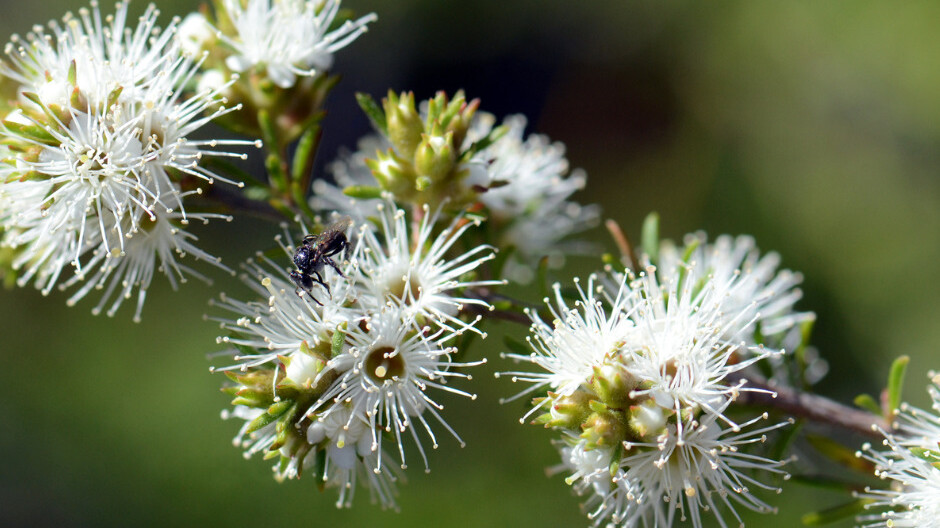Are there bad bees? You bet.

Since arriving in Australia about ten years ago, the bumblebee (Large Earth Bumblebee – Bombus terrestris) from North America and the UK has quickly spread across Tasmania, where it’s out-competing other species.
Now scientists say it’s probably only a matter of time before the bumblebee arrives on the mainland, with dire consequences.
‘Environmentally they’re as potentially damaging as some of the more familiar animals like cane toads,’ explains entomologist Dr Peter McQuillan from the University of Tasmania, in an interview on ABC Radio National’s PM program.
These bees are large, hairy and live in very large social groups. No native bees resemble them.
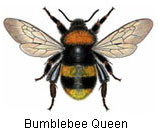
The bumblebee’s pollination technique sets it apart from the honeybee. The bumblebee ‘buzz pollinates’, which means, it holds the plant and ‘buzzes its wing muscles’ to shake all the pollen out. Buzz pollination is known to advantage many weedy species, including Scotch Broom) and Deadly Nightshade. And this is one of the potential environmental problems.
Bumblebees also compete with birds and animals for nest sites. In Tasmania, the swift parrot is already rare and now the bumblebee is outcompeting it for nesting sites.
These bees are aggressive stingers when guarding their nest and, unlike the honeybee, they can sting repeatedly. This of course makes them a threat to humans as well, particularly people who are allergic to honeybee stings.
Research is currently being undertaken in Tasmania to assess their effect on the environment and their spread.
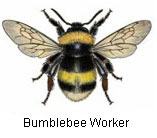
If you suspect you have collected a bumblebee, send the insect for evaluation. Complete the following steps and remember, they sting – repeatedly:
* Kill the bee in methylated spirits or ethyl alcohol
* Place in a tightly capped plastic tube or jar (not an envelope)
* Label the container with your name, address, telephone number and the date, time and exact location where the insect was collected. If possible, include other relevant information such as habitat, host plant or flower, and the weather conditions.
In Victoria, post to DPI Crop Health Services, Private Bag 15, South Eastern Mail Centre, 3176. Other States, please contact your relevant government body.
Good Bees
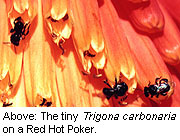
On a brighter note, native bees are proving their worth as honey producers and as superior pollinators to the European honey bee.
In an ABC Radio National interview (PM), CSIRO entomologist and beekeeper Tim Heard expounded the virtues of stingless natives bees. European honey bee populations have been ravaged by a parasite called veroa mite and he believes it’s only a matter of time before it reaches Australia. Australian native bees could be ‘an important insurance policy for the horticulture industry’.
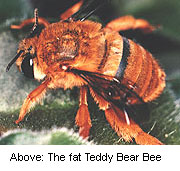
Some native bee species are already being used to pollinate crops. For example, in the Northern Rivers region of NSW Trigona carbonaria (a species of stingless native bee) is being used very successfully to pollinate crops like macadamias, avocadoes, melons, strawberries, and apples.
Honey bees are incidental pollinators, with their main role being the collection of nectar. Australian native bees are active pollinators and their main role is the collection and transfer of pollen. What’s more, the native bees are a lot easier to handle because many are stingless!
The honey from native bees, which has a unique tangy flavour, is known as Sugarbag. The honey’s potential medicinal properties are also raising interest.
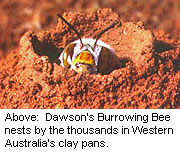
Will Archer, of Stingless Bees, has researched and experimented with breeding stingless native bees in Coff’s Harbour, NSW. He has designed a beehive to suit native bees. It’s taken him nearly three years to perfect the design, with the latest version being a round hive made of PVC and lined with polystyrene.
“It’s difficult to extract honey from native bee hives without damaging the hive, but I’ve designed a hive that’s so simple all you need is a spoon basically,” he says. It will be another couple of years before Will Archer has bred enough bees to produce honey for sale. He also aims to sell the hives for crop pollination. Will already has over 200 people on the waiting list for his Sugarbag!

There are about 2000 species of native bee, many of which are solitary (as opposed to the hive-forming type), so if you would like to know which ones you have in your area, or information on building and maintaining hives, visit the website: www.aussiebee.com.au
Attracting native bees to your garden is quite simple. They like eucalypts, grevilleas, callistemons and melaleucas, amongst many others, and they also like non-native plants like roses.
A helpful strategy is to increase habitat, like creating nest sites for solitary bee species by drilling holes in pieces of hardwood timber.
All photographs courtesy of Australian Native Bee Research Centre, North Richmond, NSW.
Related Articles:
Wildflower gardens – What’s the buzz about?
In the quest for sustainable and environmentally conscious practices, gardening enthusiasts and nature lovers alike are turning to a time-tested…
Garden Journaling – Slow down to tune in.
As we move through the year and our gardens evolve, there's something magical about documenting the journey. Garden journaling is an art that enables…


